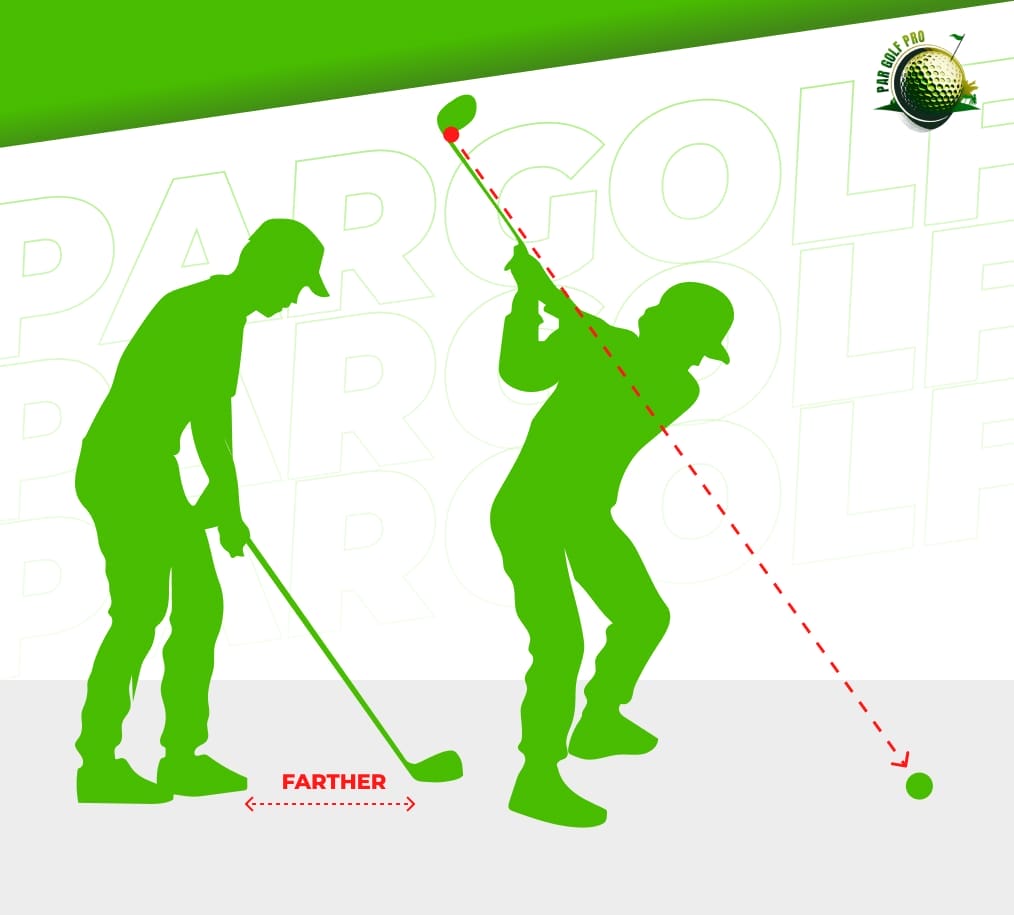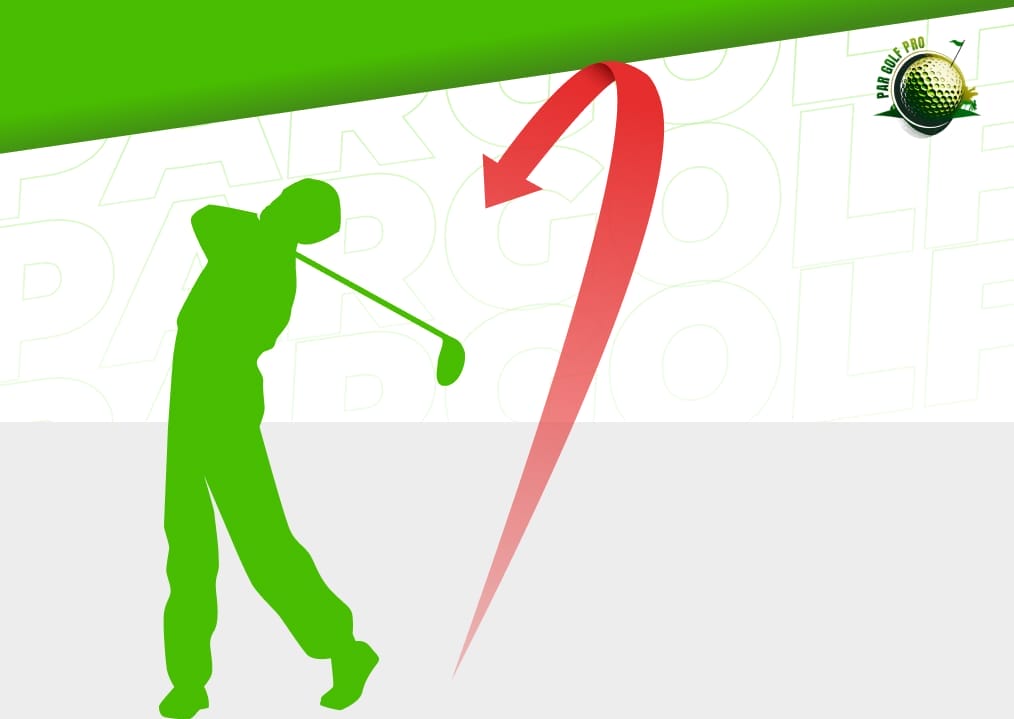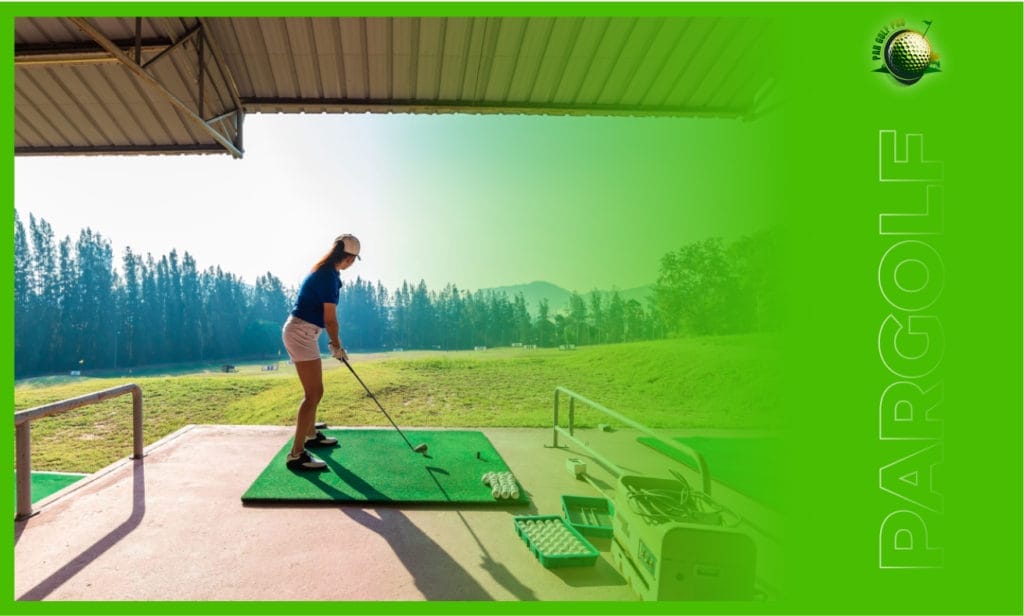Are you trying to learn how to hit a drawing golf?
Hitting a draw can be a game-changer, giving you more control over your ball flight and the ability to hit the fairway consistently. In this blog, we will provide you with pro tips to help you hit a draw in golf.
Whether you’re a beginner or an experienced golfer, these tips will give you the knowledge and techniques to improve your draw shot.
What is a Draw Shot?
A draw in golf is a shot technique that enhances a golfer’s precision, control, and range when consistently executed. This type of shot occurs when the ball follows a curving path, beginning off-target and bending back toward the desired target.
The Setup for Hitting a Draw in Golf
Whether you’re using a driver or irons, the setup plays a critical role in achieving the desired draw. The proper setup starts with your grip, which should be slightly stronger than your regular grip. This means rotating your hands to the right (for right-handed golfers). You promote a closed club face position by utilizing a firmer grip, which is crucial for hitting a draw.
In addition to the grip, your stance and alignment also play a role in setting up for a draw shot. By positioning the golf ball slightly back in your stance and aligning your body to the right of the target line, you create the optimal conditions to hit a draw.

Grip Techniques for a Draw
To hit a draw, your grip should be slightly stronger than your regular grip. This means your hands should be rotated to the right (for right-handed golfers). A strong grip helps achieve a closed club face at impact, promoting the desired draw ball flight.
To achieve a stronger grip, the “V” between your thumb and index finger of your lead hand should point towards your trail shoulder. Additionally, your lead arm should be in a strong position, with a slight bend to create leverage and power in your swing. By gripping the club with a stronger grip and positioning your lead arm correctly, you set yourself up for a closed club face position and a proper draw. It’s important to note that left-handed golfers can achieve the draw shot by closing the club face at impact, just as right-handed golfers do.

Ideal Stance for a Draw
The ideal stance for a draw involves proper foot positioning and alignment. Here are the key factors to consider:
- Start by positioning your back foot (right foot for right-handed golfers, left foot for left-handed golfers) a little bit behind the target line.
- Align your body to the right of the target line, with your feet, hips, and shoulders slightly open to the target.
- Place the golf ball slightly back in your stance, closer to your trail foot.
- Maintain a balanced and relaxed posture throughout your swing, with a slight tilt of the spine away from the target.
Setting up in this position creates the proper conditions for a closed club face position and a right-to-left ball flight.

Understanding Club Path and Swing Plane
To hit a consistent draw, it’s important to understand an inside-out swing path and swing plane in your golf swing. Here’s how these factors come into play:
- The club path refers to the direction the clubhead is traveling at impact. In a draw, the club path is to the right of the target line, with the clubface slightly closed, ensuring the ball curves to the left (for right-handed golfers).
- The swing plane is the path the golf club follows during your swing. To hit a draw, your swing plane should be slightly flatter, with the clubhead traveling on a path that is more inside-out.
- Proper club face alignment is crucial for a draw. The club face should be inside the target line and the club path at impact. This closed club face position, coupled with the right swing path, promotes the desired draw flight, ultimately drawing back close to your target.

Perfecting Your Draw
To hit a perfect draw, you’ll need to focus on a few key areas, such as club selection, clubface impact, and your overall golf swing. By mastering these elements, you’ll be well on your way to consistently hitting the coveted draw.
Practice Routines for Consistent Draws
Consistent practice is the key to perfecting your draw. Here are some practice routines that can help you hit consistent draws:
- Head to the driving range to work on your draw technique. Focus on clubface impact and swing path to hit consistent draws.
- Incorporate favorite drills into your practice routine to fine-tune your draw technique. Experiment with tee box setup, alignment, and grip to achieve better draws.
- Practice hitting draw shots with a variety of clubs, from irons to drivers, to become comfortable with different clubface impact positions.
By dedicating time and effort to consistent practice, you’ll develop the muscle memory and technique needed to hit consistent draws on the golf course. The driving range provides an ideal work environment, with enough room to experiment with your swing path and clubface impact to achieve the desired draw flight. By incorporating various drills into your practice routine, you’ll be able to fine-tune your technique and better understand the nuances of the shot.
Common Mistakes to Avoid
Even with a solid understanding of the draw, golfers can make common mistakes when attempting to hit a draw. Here are a few mistakes to avoid:
- One common mistake is having an open club face position at impact. To hit a draw, the club face needs to be closed, pointing slightly to the left (for right-handed golfers).
- Right-handed golfers may make the mistake of aiming left to hit a draw. While the ball curves to the left, the alignment should still be towards the target. Align your body to the right of the target line to promote a proper draw shot.
- The duck hook: When trying to hit a draw, you may often hook the ball, which occurs when the ball starts straight and makes a sudden left-handed turn.
It’s important to understand the ball flight laws when hitting a draw. Remember that the ball curves to the left due to the face angle at impact, not the swing path. Keep the swing path right of the target line to hit consistent draws.
Adjustments for Better Draw
Small adjustments to your swing technique and grip can result in better draw shots. Here are a few adjustments to consider:
- Make slight grip adjustments to promote a draw ball flight. Experiment with a stronger grip, with your hands rotated to the right (right-handed golfers).
- Focus on clubface alignment to achieve a closed club face position at impact. Check your grip and wrist position to ensure the clubface remains closed throughout the swing.
- Pay attention to your clubhead path, ensuring it stays right of the target line, to promote a consistent draw with less spin and a straighter ball flight.
Advanced Tips for Hitting a Draw
Now that you have a strong foundation in hitting a draw, let’s explore some advanced tips to take your draw to the next level. These tips will help you hit a draw off the tee and with your fairway woods, giving you even more control and distance on the golf course.
Implementing a Draw into Your Swing
Implementing a draw into your swing requires a few key adjustments. Here’s how to incorporate a draw into your golf swing:
- Make swing adjustments to promote a draw. Focus on your swing path, ensuring it starts to the right of your target line. This promotes the right-to-left ball flight.
- Incorporate proper rotation throughout your swing to support the draw. Rotate your body, especially your hips and shoulders, to the left (for right-handed golfers) to encourage a draw flight path.
- Pay attention to your right-hand position, particularly during the downswing, to promote the desired draw. The right hand should rotate naturally to the right, promoting a closed clubface position at impact.

Drills to Improve Your Draw
To improve your draw, it’s important to practice specific drills that target the elements of the shot. Here are some drills that can help you improve your draw shot technique.
Range Drills for Effective Practice
The driving range is the perfect place to practice and refine your draw technique. Here are a few range drills that can help you hit more consistent draws:
- Alignment Drill: Set up two alignment sticks forming a gate with enough room to swing your club. Practice hitting draws within the gate lined up to the right to fine-tune your swing path and clubface alignment.
- Straight to Draw Drill: Start by hitting a straight shot, then gradually incorporate a draw. This drill helps you transition from a straight shot to a draw with ease.
- Ball Position Drill: Experiment with ball position, hitting draws with the ball positioned slightly back in your stance. This drill helps promote a closed clubface position at impact.
By practicing these range drills, you’ll gain a better understanding of the draw and develop the muscle memory needed to hit consistent draws on the golf course.
At-Home Drills for Consistency
Even when you can’t make it to the driving range, you can still work on your draw at home. Here are some at-home drills that can help you improve the consistency of your draw:
- Alignment Drill: Set up an imaginary line in your yard or living room. Use alignment sticks or simply imagine a line to practice your swing path and clubface alignment.
- Takeaway Drill: Focus on the takeaway of your golf swing, ensuring the clubhead stays on the imaginary line. This drill helps with proper clubface alignment throughout the swing.
- Mini Swings Drill: Practice swing drills with a shortened backswing, focusing on a smooth transition to the downswing. This helps promote a consistent draw with less excess movement.
By incorporating these at-home drills into your practice routine, you’ll be able to work on the consistency of your draw, even when you can’t make it to the golf course or driving range.

Learning from the Pros
Learning from the pros is a great way to improve your draw. Professional golfers have mastered this shot, and studying their techniques can provide valuable insights into your game.
Professional Golfers Known for Hitting a Draw
Several professional golfers are known for their exceptional draw shots. By studying their swing techniques and approaches, you can gain valuable insights into hitting consistent draws. Here are a few professional golfers to learn from:
- Tiger Woods: Tiger Woods is renowned for his power draw, which consistently finds the middle of the fairway. Study his swing path, clubface alignment, and grip to improve your draw.
- Rory McIlroy: Rory McIlroy’s draw is effortless, and he generates tremendous power with it. Analyze his club path, swing plane, and alignment to incorporate his techniques into your game.
- Bubba Watson: Bubba Watson is known for his booming draw off the tee. Study his swing to understand the club path, rotation, and power required to hit consistent draw shots.
Try These Tips to Start Hitting Draws
Understanding the basics, such as the grip, stance, and club path, is essential for hitting consistent draws. By practicing drills and avoiding common mistakes, you can perfect your draw and add another dimension to your game. Learning from professional golfers known for their draw shots can provide valuable insights and inspiration. And most importantly, implementing a draw into your swing can potentially lower your golf score by providing more control and accuracy on the course.
Don’t wait to learn how to hit a draw in golf — begin practicing and implementing these tips and tricks today.
